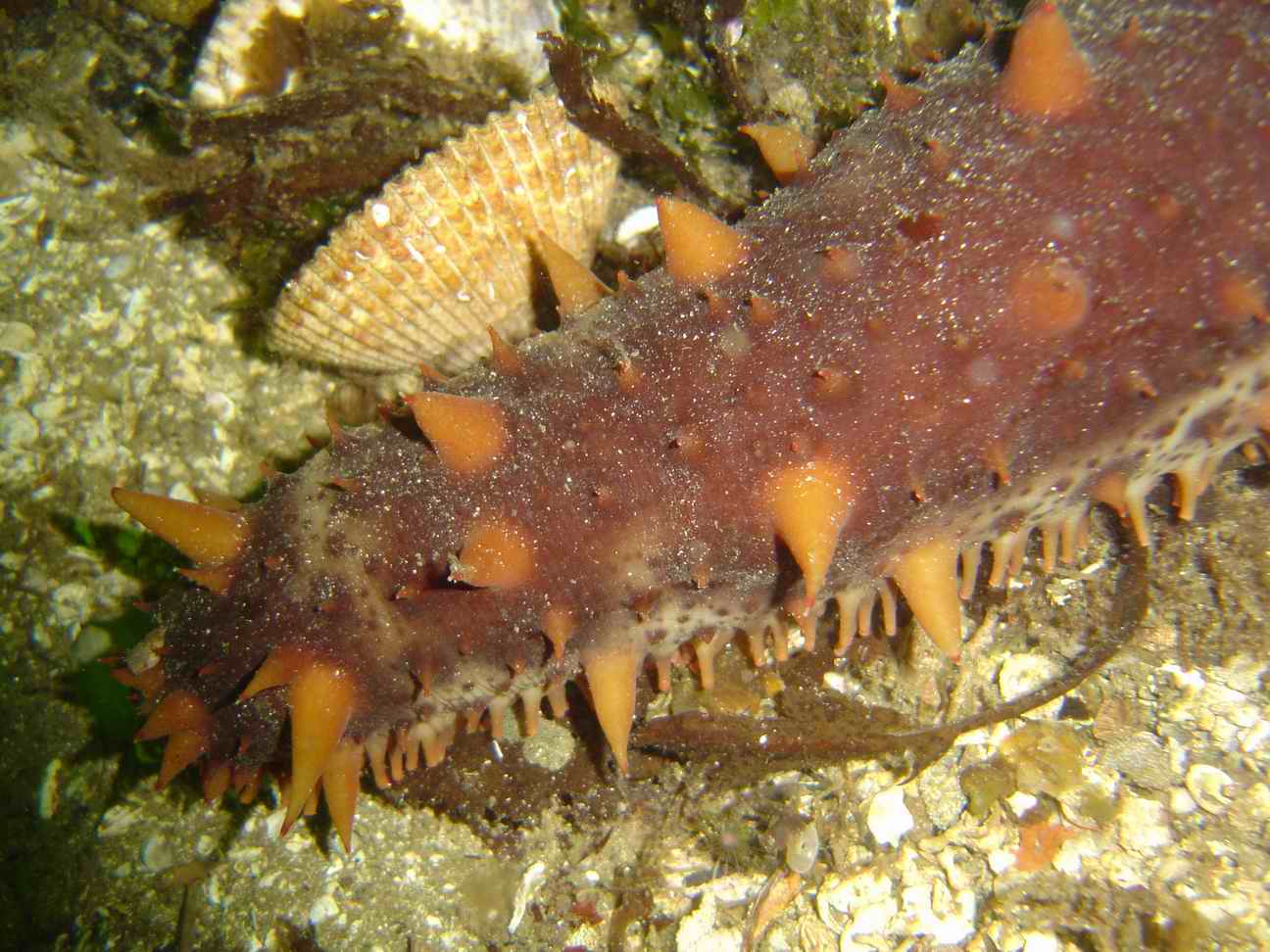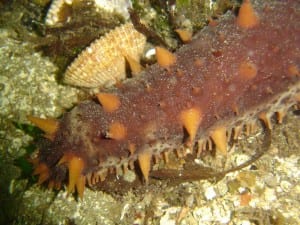The state’s Board of Fish has voted against a sea cucumber proposal that was prompted by concerns over Southeast’s expanding population of sea otters. A dive fishery group put forward the idea in the hopes of harvesting more of the valuable bottom-dwellers, before they’re decimated by the otters. As Joe Viechnicki reports, the decision followed a presentation to the board about the marine mammals and their impacts in the region.
The board heard an hour-long talk about the latest research on Southeast sea otters which are now estimated to total 20-thousand. U.S. Fish and Wildlife Service marine mammal research biologist Verena Gill says the population is increasing at four percent annually in northern southeast. That number is 12 percent in the southern Panhandle. Gill said otters haven’t increased their range in the northern part of the region. “But they have increased their range in southern Southeast Alaska,” she said. “Primarily that is, the main areas are around Kuiu Island and Kupreanof around Totem Bay and around the Kake area and then in the south around the Barrier Islands.”
The animals once blanketed the region but were hunted to near extinction by late 19th and early 20th century fur trade. The state reintroduced them to southeast waters in the 1960’s and they’ve since thrived.
Researchers are studying the otter’s diet and tracking some individual animals movements. They’re finding the predators are impacting shellfish, sea cucumbers and other creatures caught by commercial fishermen. Dive Fishermen and crabbers have raised concerns about the issue for years. They worry the animals will eventually put them out of business. But otters could have a variety of effects on the ecosystem according to Ginny Eckert, a fisheries professor with the University of Alaska Fairbanks.
“We think there could be positive impacts on other fisheries, potentially herring, rockfish and salmon,” Eckert said. “And the reason for that is because the otters help the kelp by eating urchins. And so there’s more kelp now in areas where there are otters. That’s not been shown but we’d like to examine that.”
Commercial divers are anxious to see some action taken on the issue now. They submitted a proposal to the Board that would have allowed for an increased harvest of sea cucumbers to account for otter predation. Phil Doherty is a former Fish and Game biologist and works for the Southeast Alaska Regional Dive Fisheries Association. He asked the board to make changes based on otters. “Look at different ways that we can go in there and perhaps harvest them at a little different harvest rate, or front load some of the harvest, before they are gone. We are not saving these animals. We had sea cucumbers, geoducks, sea urchins and Dungeness crab. We are not saving them for anything. And so, the board will have to have that discussion. Do we wanna try and harvest them at a little bit higher rate, a little bit higher now? We know what’s gonna happen a few years down the road they’re not gonna be there, regardless if we harvest them or not.”
The board of fisheries took up that proposal the following day. Board member John Jensen of Petersburg said he liked the concept. “I believe we should feed people before we feed sea otters,” Jensen said “They’re gonna end up eaten ’em all anyway, if they keep going at the rate they are. I don’t know if I support this proposal or not but I think humans should have a little more priority than sea otters Mr. chair.”
But Jensen, a commercial fisherman and skiff rental business owner, was the only member who expressed support for the idea. Board chair Karl Johnstone, a retired judge from Anchorage, did not want to pass it. “To do so would reject the constitutional mandate to manage for sustained yield for the maximum benefit of the people,” Johnstone said. “I understand feeding people rather than sea otters. But it would place a higher value on the geoduck and the sea cucumber than on the sea otter. Who are we to place that value at this time? It would put a higher value on money rather than on a marine mammal. Who are we to place that value? At least in my opinion.”
The board voted-down the dive proposal with only Jensen supporting it. It’s possible the cucumber fishery could see some changes in the future. Under a different proposal from the state, the Department of Fish and Game suggested a variable harvest rate based on estimated cuke numbers in different parts of Southeast. It would allow for no fishing in areas with depressed cucumber numbers, and a higher harvest in areas that have strong stocks.
Fish and Game staff eventually withdrew support for that proposal and the board took no action on it. But the department’s Kyle Hebert said they wanted to look for other solutions. “We would like to improve upon the harvest rate approach that we use now,” Hebert said. “We would like to try to determine if there’s a better way to deal with sea otter areas, impacted areas. So we would like to work with SARDFA more and see if we could come up with something.”
Some of the discussion also focused on the possibilities for increased hunting of otters by Alaska Natives. The animals are protected by federal law, but it does allow Natives to harvest them for the creation of handicrafts. There’s federal legislation proposed that would loosen restrictions on the commercial use of whole otter pelts. An estimated 600 otters have been killed in Southeast during each of the past two years.











